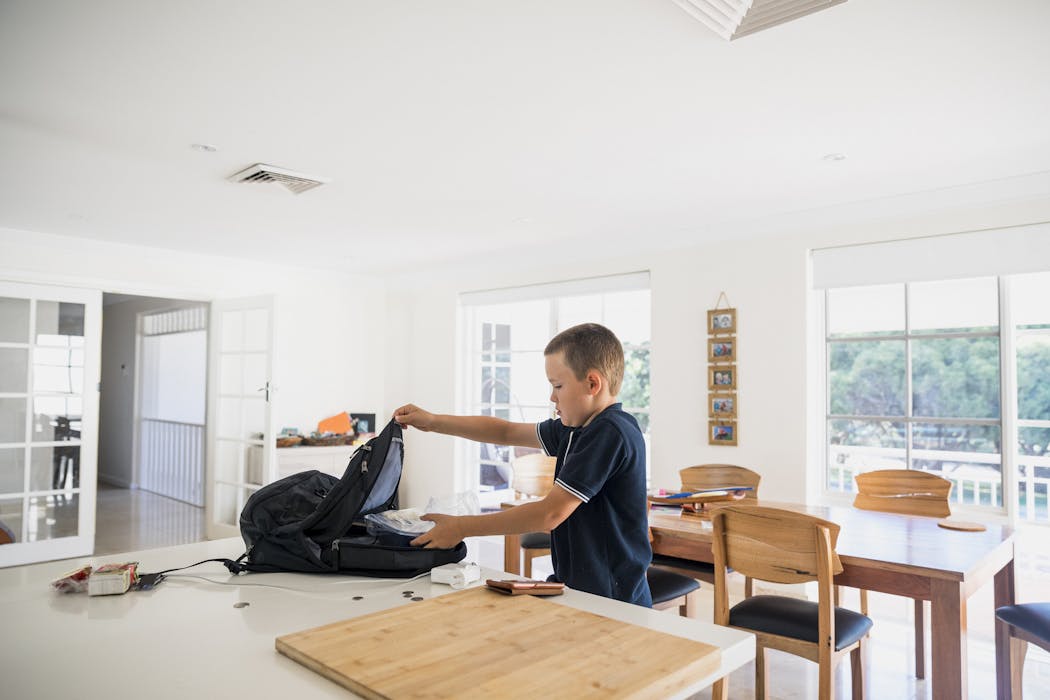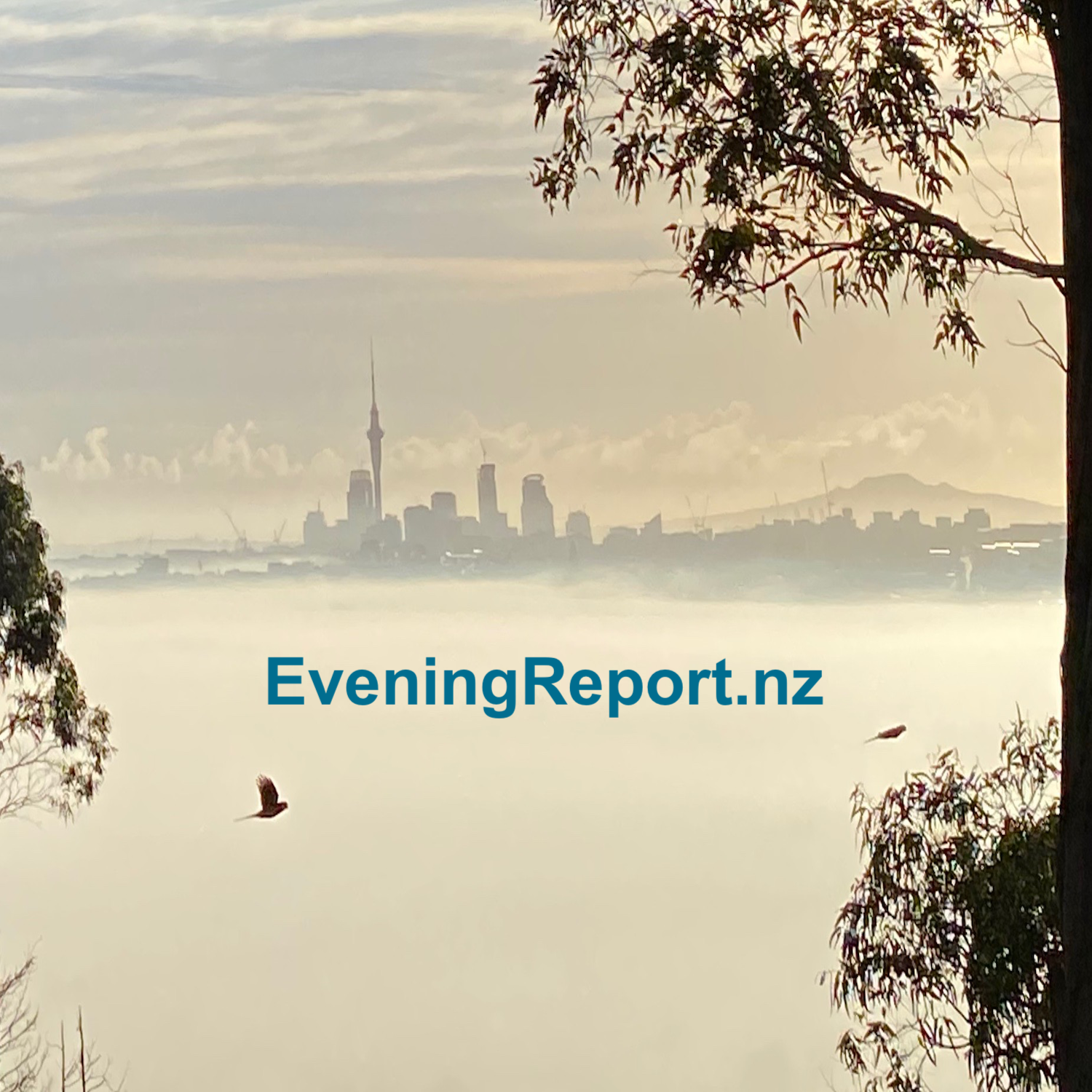Source: Radio New Zealand
Ashik Ali was sentenced to three years’ jail for manslaughter. Kim Baker Wilson / RNZ
Police wanted a trucker, who was jailed for three years for manslaughter on Thursday, to lose his operating licence years before his dodgy truck rolled backwards, fatally hitting a roadworker.
Twice moves were made to take the Transport Service Licence off Auckland company director Ashik Ali.
NZTA was going to, but then pulled back, official documents released to RNZ showed.
Ali’s submissions in mid-2021, arguing to keep his licence, included pledging his company would no longer operate the truck that later rolled away.
Johnathon Walters was run over at night at roadworks in a Remuera street in May 2024, when the brakes on Ali’s parked and loaded truck failed.
The records released under the Official Information Act showed Ali ran trucks that were unsafe for a long time.
Ali, 56, pleaded guilty in mid-2025.
Walters’ whanau told the court this week they worried for family members doing similar work.
“Because of your actions, I now carry a consistent anxiety that they too may go to work one day and not return to their whanau,” sister Karin Fraser told Ali.
The circumstances of Walters’ death infuriated the trucking industry.
“This must be a turningpoint” for the road safety system, the National Road Carriers Association said previously.
“Mr Ali had too many encounters with it, yet this still occurred,” association chief executive Justin Tighe-Umbers said, after the sentencing. “The regulator needs stronger powers, not least the ability to impound trucks.
“Mr Ali’s defence lawyer described how Mr Ali was in a bind – ‘He couldn’t afford to keep his truck roadworthy and he also couldn’t afford to turn away work’.
“No, what he couldn’t afford was to cause the death of another human being and to go to prison for three years.”
He hoped it would deter others.
NZTA rejected the association’s contention that [https://www.linkedin.com/pulse/systemic-failure-killed-johnathon-walters-ckzkc/
systemic failure killed Walters].
It used all available levers against Ali, it said. The killer truck had been ordered off the road.
“Mr Ali chose to drive the vehicle in spite of this.”
The Walters family had been left asking the court how to “make sure that this doesn’t happen again?”
‘The brakes failed’
Ali and his company, Ashik Transport Ltd, had run-ins with police and the Transport Agency from 2018.
Early on, the firm told inspectors: “We are going to run our business to the beta standard. We want you to inspect our trucks and tell weather our truck is not road worth [sic].”
More than once, they gave Ali a chance to comply, but the undertakings the company gave proved mostly worthless.
This is revealed in 21 documents released by the Transport Agency to RNZ under the OIA. At the very least, these showed the high cost to the state of chasing a single rogue operator.
They also showed years of attempts that ultimately failed to keep other people safe, that were marked by inspectors sometimes saying Ali posed a real risk and should lose his operating licence, and sometimes saying he did not and just needed monitoring.
Ali bought the truck that later hit Walters in 2017, five years after he first set up Ashik Transport from a Papatoetoe residential address.
A year later, the truck was pink-stickered for the first time. A pink sticker is issued to an unsafe vehicle to order it off the road.
It is tougher than a green sticker for a non-compliant truck. Pink stickers are stuck on a truck, but they had been removed from the truck that struck Walters.
“The company came to our attention, because one of their trucks was involved in a crash, where the brakes failed and it hit the rear of a car,” Constable Mark Painter emailed Sergeant Malcolm Spence in March 2020.
“That truck had been Pink stickered a year earlier, but was still operating.
“During an interview, he admitted he had attempted to avoid RUC [road user charges] by swapping Hubs prior to getting COF” – a Certificate of Fitness, like a car Warrant of Fitness, but assessed on trucks usually every six months.
In the email, Painter, a South Auckland commercial vehicle safety team member, wrapped up saying: “I would like you to contact the NZTA to see if we can remove their Transport Service Licence.”
Spence passed this on to NZTA, saying; “The state of their vehicles now showing real safety concerns.”
This came well after a series of overhauls at the Waka Kotahi agency, sparked by revelations about 2018 of its weak regulating of heavy vehicles.
Trucks with cracked towbars had been OK’ed by COFs. In some cases heavy trailers had snapped off or come close to it.
Brake-testing was shown up as deficient for some systems. Bad brakes and tricky brake systems have been an ongoing headache for the agency.
The OIA papers showed the truck that hit Walters had a cardan-shaft handbrake that failed in tests after the crash. Cardan shafts have been implicated in half a dozen deaths since 2010, but earlier this month, NZTA rejected a coroner’s suggestions the dangers for 70,000 vehicles were ongoing, saying a test regime had made a real difference to cardan shafts in the last three years.
‘Very little harm’
The police move against Ali’s transport service licence in March 2020 did not work, although it triggered three months of assessments and inspections by NZTA.
This began with a desktop check that called for onsite inspections, but said: “On the face of it, there is very little evidence to show there is a problem with safety at this company.”
Two fleet inspections found four trucks had “numerous safety issues, including the vehicle’s structural and mechanical integrity”, as well as “multiple offences for using the vehicles while not compliant”.
The truck that later hit Walters had a dozen defects, with a corroded cab and a “severe” oil leak in the hydraulic ancillary system.
Inspectors identified that seven out of the company’s 11 vehicles had no current COF, six had expired or cancelled regos, and three had unregistered hubometers. NZTA later told RNZ it was not illegal to have such vehicles around, as long as they did not go on the road.
An agency risk assessment in April 2020 said Ashik Transport was actively or intentionally non-compliant, adding “a decision not to act would undermine confidence in the land transport system and/or NZTA”.
It also said Ali posed minimal potential of “very little harm” to the wider public.
A year later, the risk was rated “serious” and added that public interest was “high, action if necessary to deter others from similar conduct”, yet Ali kept hold of his TSL.
Instead, he was told to get COFs done every three months, instead of the usual six.
‘Necessary to deter others’
A year later, a similar sequence occurred.
Police had found an “air leak from brake system” in the Walters truck in March 2021, and a review noted Ali’s fail rate at roadside checks was five times the national average.
“Mr Ashik has been visited on numerous occasions, with advice given every time about maintaining compliant vehicles and keeping records,” a memo in April 2021 said.
“The substandard level of repairs and long term temporary fixes that are evident on every visit show that Mr Ashik is not able to keep his vehicles in a consistently compliant state.”
The agency went as far as to tell Ali in May 2021 it would revoke his TSL.
It pulled back on this, when he appealed and pledged a list of improvements, including not operating the killer truck and at least one other, paying overdue RUC and ensuring repairs were done.
Instead, in June 2021, the agency issued a Notice of Improvement.
“On their face, the submissions indicate that Ashik Transport Limited are willing to make efforts to improve,” the notice said.
In 2022 and 2023 things went quiet, apart from an NZTA email to Ali in mid-2022 saying he was still on a Notice of Improvement and up for review. At that stage, his COF and roadside pass rates had improved, but then been marred by three offences for vehicles not being up to standard.
Undercutting ‘honest operators’
Rogue truckers cut corners and saving money is often a driver. The Ali case sparked an industry outcry about that.
“For too long, too many illegal transport operators have undercut honest operators,” wrote Tighe-Umbers on Thursday. “While only a small minority, it only takes one to cause a catastrophe, destroying lives and tarnishing the reputations of good and bad operators alike, without discernment.”
Trucker John Baillie had called the case a cause for “despair”. Dishonest operators “are just running rampant”, he said.
Ali’s defence lawyer, Ron Mansfied KC, told the court: “He never wanted it, he should have thought it through, he didn’t, but certainly this was not offending he intended or envisaged.”
The OIA records included an NZTA email stating Ashik Transport was struck off in April 2019, leaving behind a road-user charge debt of $37,500 with NZTA, it said was probably unrecoverable. A debt to the Justice Ministry of $23,000 had been paid by 2020.
One theme in the reports and emails is concern about safety and defrauding of the COF and RUC systems.
After surrendering his transport service licence in early 2019, Ali obtained another, after his new company was incorporated under the same name, Ashik Transport Limited, in August that year.
The TSL for the truck that struck Walters was also described as being owned by an auto-repair company.
Under scrutiny in early 2020, Ali’s company emailed NZTA to say: “We want you to come and see our workshop and our operation.
“We are going to run our business to the beta standard… we want you to inspect our trucks and tell weather our truck is not road worth… we invite you after the [Covid] lock down… we are very small businesses .. so please .. thank you.”
An inspector told their colleagues later: “Questionnaire returned from company and according to them they are in excellent shape.”
Ali more than once made a case to keep operating, pledging to do better with maintenance and repairs, and to fit his trucks with electronics that prevented road-user charges being dodged.
“Mr Ali is accommodating and expresses his desire to comply and has committed to replacing the trucks with newer ones, while downsizing to 2 trucks,” wrote an inspector in mid-2020. “This would reduce the time and money required to keep the existing fleet on the road and compliant.”
However, even after Walters was killed in May 2024, the company kept trying to dress things up.
Inspectors who had descended on its premises a month later in June 2024, reported: “There was evidence of the vehicles being repaired prior to fleet audit.
“As-new tyres were fitted [never been run] along with tool marks indicating that the brakes had just been adjusted.”
They pink-stickered four of the trucks regardless.
“A lack of regular repairs and maintenance is undertaken, only reactive work appears to be the case with what was sighted during the audit,” one wrote.
Deterrence
On Thursday, the crown prosecutor said Ali had shown disregard for others and a deterrent sentence was needed.
Justice Lang said his actions fell well short of what was expected of a reasonable person.
“The prosecution argued Mr Ali’s gross recklessness needed to serve as a deterrent to others,” said Tighe-Umbers in a blog.
“That is exactly right and let’s hope the right people were paying attention.”
On Friday, He told RNZ he was now picking up signs the system would get more teeth next year, with clearer standards and stronger ability to act when those were missed.
Although NZTA had said it used all available levers against Ali and the system was not to blame, just the individual, Tighe-Umbers believed, at heart, the agency wanted extra powers to impound a dodgy truck as a last resort.
“It is a difficult balance to be struck. You’re not just removing a truck, often you’re removing someone’s livelihood and ability to work.
“That needs to be balanced, of course, with the responsiblities of that individual to operate their truck in a safe manner.
“It is a privilege to operate up to 50 tonnes or beyond out on the road, and there has to be a very strong incentive for them to do that.”
The TSL for Ashik Transport Limited has been revoked since August 2024.
On Friday, NZTA land transport deputy director Mike Hargreaves said the sentencing should serve as a deterrent.
“As noted by the crown prosecutor, the truck involved in the fatal incident was unroadworthy and was driven by Mr Ali on more than one occasion, disregarding police orders.”
The truck was not registered, had no COF and had been pink-stickered.
“In spite of this, Mr Ali made a decision to illegally drive this unregistered and unsafe vehicle, after it had been ordered off the road, resulting in the death of another person.
“NZTA worked closely with police and the crown prosecutor to support this prosecution. Mr Ali’s guilty plea to a charge of manslaughter and the sentence imposed by the court speaks strongly to the consequences of that decision.
“NZTA extends our sincere condolences to Mr Walters’ family, friends and everyone affected by this tragedy.”
Sign up for Ngā Pitopito Kōrero, a daily newsletter curated by our editors and delivered straight to your inbox every weekday.
– Published by EveningReport.nz and AsiaPacificReport.nz, see: MIL OSI in partnership with Radio New Zealand















